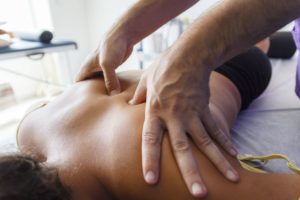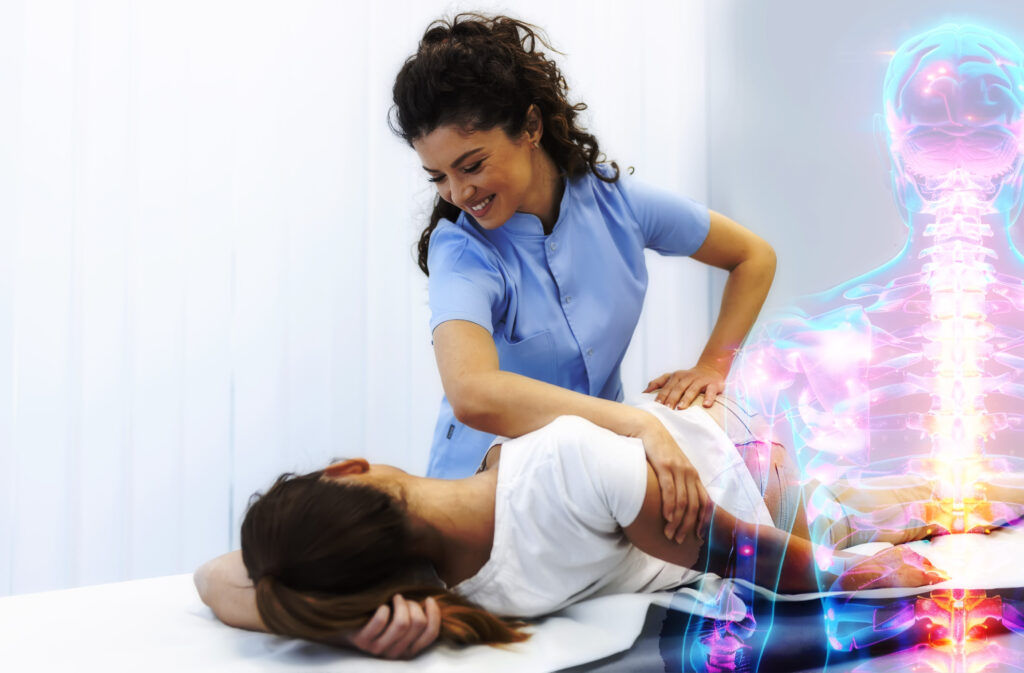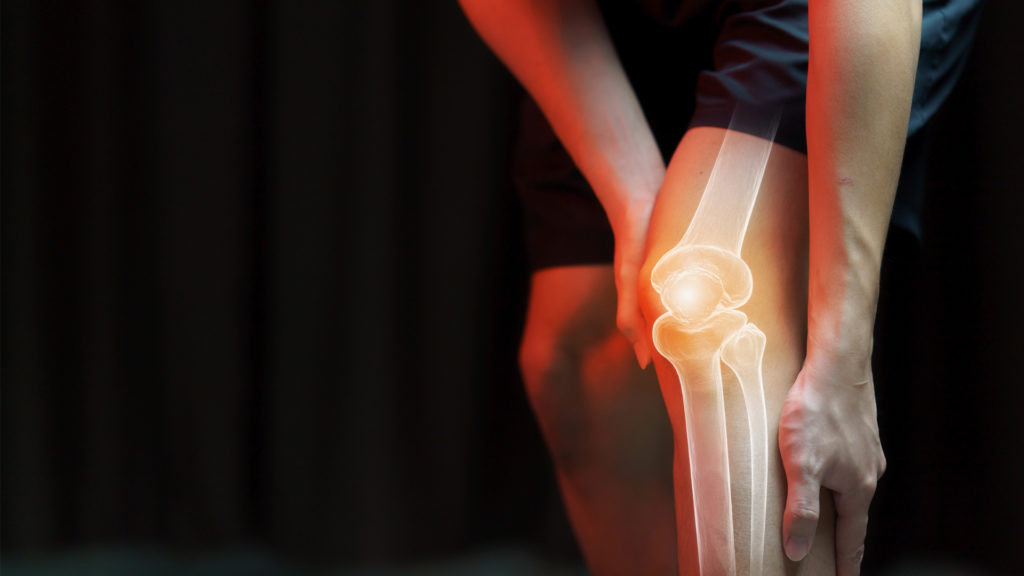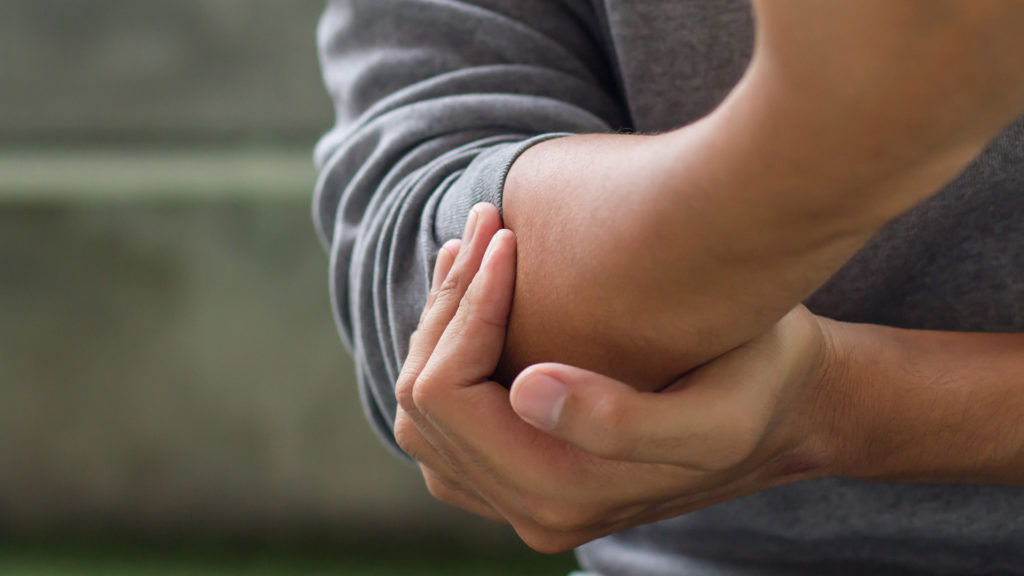
Sports Chiropractor | North Atlanta Chiropractic Center
Are you an athlete struggling with pain or looking to enhance your performance? North Atlanta Chiropractic Center provides specialized sports chiropractic care for athletes in Duluth and throughout Gwinnett County. Our sports chiropractor services address the unique needs of active individuals, from weekend warriors to professional competitors, helping you achieve optimal physical condition and return to your sport safely after injury.
Se Habla Español
AS SEEN ON:





Why Choose North Atlanta Chiropractic Center
North Atlanta Chiropractic Center stands apart as the premier sports chiropractor in Duluth. Led by Dr. Angela Amaral, who brings over 20 years of experience in chiropractic care and sports medicine, our practice combines extensive expertise with personalized attention. We understand the unique demands placed on athletes’ bodies and offer specialized treatment that addresses not just symptoms but underlying causes.
Our approach integrates traditional chiropractic techniques with cutting-edge sports medicine protocols, creating comprehensive treatment plans that promote faster recovery and enhanced athletic performance. As board-certified specialists in physiological therapeutics and electrical therapeutic modalities, we offer a level of sports chiropractic care that few can match. Athletes choose us because we deliver results when other approaches have failed.
Comprehensive RICE Treatment Protocol for Athletic Recovery
North Atlanta Chiropractic Center provides expert RICE treatment protocol implementation as part of our sports chiropractor services. The RICE method (Rest, Ice, Compression, Elevation) forms the foundation of immediate care for sports injuries, but our approach goes beyond these basics by enhancing this proven protocol with specialized chiropractic adjustments that accelerate healing.
Our sports medicine chiropractor team educates athletes on exactly how to apply these techniques between treatments, maximizing their effectiveness. By combining RICE with targeted chiropractic care for sports injuries, we create a comprehensive approach to athletic recovery that addresses inflammation, pain, and restricted mobility simultaneously.
For athletes dealing with recurring injuries, our enhanced RICE protocol incorporates preventative strategies that strengthen vulnerable areas and improve biomechanics, helping athletes not only recover from current injuries but also build resilience against future ones.

Expert Management of Patellofemoral Syndrome and Knee Pain
North Atlanta Chiropractic Center provides specialized treatment for patellofemoral syndrome and other knee conditions that frequently plague athletes. Our approach combines precise chiropractic adjustments with targeted rehabilitation exercises designed specifically for the patellofemoral joint.
Patellofemoral syndrome often results from biomechanical imbalances in the lower extremity, which our sports chiropractor team expertly identifies through comprehensive assessment. We analyze your gait, stance, and movement patterns to determine the underlying causes of your knee pain, ensuring we address the root problem rather than just masking symptoms.
Our treatment protocols incorporate advanced chiropractic techniques, specific strengthening exercises for the quadriceps and hip stabilizers, and hands-on soft tissue work. We also provide guidance on proper form during athletic activities to prevent the recurrence of patellofemoral issues.
Specialized Care for Shoulder Injuries and Mobility Restoration
North Atlanta Chiropractic Center provides exceptional care for shoulder injuries that frequently affect athletes in throwing and overhead sports. Our sports chiropractor team utilizes advanced diagnostic techniques to precisely identify the nature of your shoulder condition, whether it’s rotator cuff tendinopathy, impingement syndrome, or instability issues.
For athletes with shoulder limitations, we implement a multi-faceted treatment approach that combines chiropractic adjustments of the shoulder complex with specialized soft tissue techniques. Our expertise allows us to address not just the shoulder joint itself but also the surrounding musculature and the cervical and thoracic spine regions that influence shoulder function.
Through a combination of targeted adjustments, therapeutic chiropractic exercises, and hands-on techniques, we help athletes regain full range of motion while building stability and strength, ensuring that athletes can return to their activities with reduced risk of re-injury and improved performance capacity.
Tennis Elbow/Golfer’s Elbow Treatment and Prevention Strategies
North Atlanta Chiropractic Center provides specialized treatment for tennis elbow (lateral epicondylitis) and golfer’s elbow (medial epicondylitis), two common overuse injuries that affect athletes across various sports. Our approach combines immediate pain relief with long-term rehabilitation strategies to address these challenging conditions.
Our sports chiropractor team utilizes evidence-based techniques including instrument-assisted soft tissue mobilization, targeted adjustments, and therapeutic exercises specifically designed for tennis and golfer’s elbow. This multi-modal approach addresses both the inflammatory response and the underlying biomechanical issues that contributed to the condition.
We provide comprehensive education on proper form, equipment selection, and strengthening protocols to help athletes avoid recurrence. Our chiropractic care for sports enthusiasts includes analyzing your technique and making recommendations for modifications that can reduce stress on the elbow tendons.

Distinguishing Between Acute vs. Overuse Injuries in Athletes
North Atlanta Chiropractic Center provides expert assessment to distinguish between acute and overuse injuries, a critical distinction that determines the most effective treatment approach. With our specialized diagnostic skills, we can quickly identify whether you’re dealing with a sudden traumatic injury or a condition that has developed gradually over time.
For acute sports injuries, our chiropractic treatment protocols focus on controlling inflammation, protecting injured tissues, and initiating appropriate early mobilization. Our expertise allows us to determine exactly when and how to progress your rehabilitation to optimize healing without risking further damage.
With overuse injuries, we focus on identifying and correcting the biomechanical issues, training errors, or technique flaws that contributed to the problem. Our comprehensive analysis looks at movement patterns, strength imbalances, and recovery practices, helping prevent the cycle of recurring injury that frustrates so many athletes.
Advanced Chiropractic Alignment Benefits for Sports Performance
North Atlanta Chiropractic Center provides performance-enhancing chiropractic alignment that helps athletes reach their full potential. Through precise adjustments tailored to your sport’s specific demands, we help optimize your body’s biomechanical efficiency.
Athletes frequently report improvements in power output, range of motion, coordination, and recovery time following our adjustment protocols. This is because proper spinal alignment enhances nervous system function, which controls every aspect of athletic performance. Our approach to chiropractic and sports performance is backed by research showing that regular adjustments can measurably improve functional capacity in competitive athletes.
We customize our alignment techniques based on your sport, position, and individual biomechanics. Whether you need chiropractic for sports injuries or performance enhancement, our targeted approach addresses the specific stresses your body encounters.
Professional Concussion Management and Return-to-Play Protocols
North Atlanta Chiropractic Center provides comprehensive concussion management services that prioritize athlete safety and long-term brain health. As specialized sports chiropractors with advanced training in concussion protocols, we offer evidence-based assessment and management strategies for this serious injury.
Our concussion management begins with thorough baseline testing and detailed assessment of symptoms following injury. Using validated tools and techniques, our team can accurately evaluate concussion severity and monitor recovery progress, ensuring that return-to-play decisions are based on objective measures rather than subjective reporting.
We implement structured return-to-play protocols that gradually reintroduce physical and cognitive demands, carefully monitoring for symptom recurrence at each stage. Our expertise includes addressing the cervical spine dysfunction that often accompanies a concussion and can prolong symptoms if left untreated.

Boost Your Athletic Performance Through Specialized Chiropractic Care
North Atlanta Chiropractic Center provides performance-enhancing care that takes athletes to the next level. By addressing subtle restrictions in joint mobility, muscle function, and nervous system coordination, we help unlock your body’s full athletic potential.
Our performance-focused sports chiropractor services include comprehensive biomechanical analysis, sport-specific adjustment protocols, and customized recommendations for training modifications. Athletes working with our team frequently experience improvements in power, endurance, agility, and recovery capacity.
We work with competitors across all sports and ability levels, from weekend warriors to elite performers. Our chiropractic care for sports enhancement is particularly beneficial during intensive training phases and competition seasons when optimal physical function is critical.
Don’t Let Pain Sideline Your Game – Relief Starts Today
North Atlanta Chiropractic Center provides immediate relief options for athletes who can’t afford downtime. When pain threatens to keep you from competition or training, our sports injury chiropractor team offers same-day appointments and rapid-response treatment protocols designed to get you back in action quickly.
Our urgent care approach to sports chiropractic combines pain-relieving modalities with functional treatment techniques that address both symptoms and underlying causes simultaneously. Unlike conventional approaches that might rely heavily on medication or recommend extended rest, our treatment focuses on active recovery strategies that maintain fitness while promoting healing.
Many athletes experience significant relief after their very first treatment session at our Duluth office. Don’t let pain determine your athletic schedule – call North Atlanta Chiropractic Center at (770) 450-9575 today and discover how our specialized care can keep you in the game.
Contact Us Today
Ready to experience the difference that specialized sports chiropractic care can make in your athletic performance and recovery? North Atlanta Chiropractic Center is Duluth’s premier destination for athletes seeking expert care. Whether you’re dealing with a nagging sports injury or looking to enhance your competitive edge, our team is ready to help.
Schedule your consultation today by calling (770) 450-9575. Our convenient location at 1533 Pleasant Hill Rd #100, Duluth, GA 30096 serves athletes throughout Gwinnett County and surrounding areas. Don’t let pain or dysfunction limit your athletic potential – contact North Atlanta Chiropractic Center now and take the first step toward optimal performance and injury-free competition.
What Our Athletic Patients Say
“After struggling with recurring hamstring issues for two seasons, I finally found relief through the sports chiropractic treatment at North Atlanta Chiropractic Center. Their comprehensive approach addressed not just my symptoms but the underlying biomechanical issues causing my problems.”
– Michael T., Collegiate Runner
“As a tennis player dealing with chronic tennis elbow, I had tried everything before finding Dr. Amaral and her team. Their specialized chiropractic care for sports injuries made an immediate difference, and their prevention strategies have kept me pain-free for over a year now.”
– Sarah K., USTA League Player
Don’t wait until pain sidelines you from the activities you love. Experience the North Atlanta Chiropractic Center difference today. Call (770) 450-9575 to schedule your appointment with Duluth’s leading sports chiropractor.
